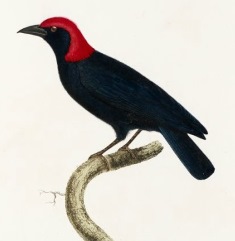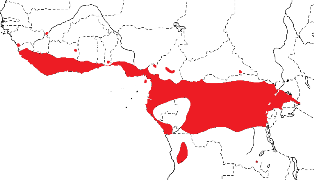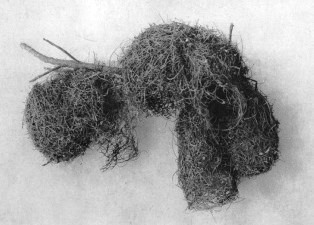Weaver Wednesday [92]: Red-headed Malimbe 2014-03-19 (495)
 Weaver Wednesday
Weaver Wednesday

The Red-headed Malimbe Malimbus rubricollis is the most common and widespread malimbe, occurring over much of West AFrica. It differs from the similar-looking Red-crowned Malimbe by the red crown extending to the hindneck and as a half-collar on the sides of the neck. It differs from other malimbes by its all-black underparts. The female Red-headed Malimbe is similar to the male, but forehead is black. The juvenile is sooty black, and the red on the head is paler and the bill is dark horn.
The Red-headed Malimbe occurs from Guinea across West Africa and to East Africa in Uganda and extreme western Kenya (Kakamega and Nyandoro) and Bukoba in Tanzania. It is found on Bioko Island and south to northern Angola (see map below, based on Birds of Africa). Several races have been proposed, but the differences are slight and it is now treated as monotypic.

The Red-headed Malimbe inhabits lowland primary forest, as well as transitional forest, forest edges and clearings, and secondary growth. It is sometimes found in coffee and cocoa plantations, and in small forest patches within farmland.
The Red-headed Malimbe is largely insectivorous, prey items including ants, beetles, grasshoppers, caterpillars and other insect larvae, and alate termites. Other food items are small snails, spiders, fruits and berries. Its diet has been estimated as 50% arthropods, 30% fruit, 20% other material. It feeds mainly in the canopy, generally 15-45 m high and seldom below 25 m. The Red-headed Malimbe hops along horizontal branches, clambers about, often hanging upside-down; it probes bark, lichens and patches of moss, prying with its bill in search of grubs. It often forages like a woodpecker, unlike other malimbes. It hawks winged termites and other flying insects in forest clearings. It forages in pairs or small parties, and joins mixed-species flocks.

The Red-headed Malimbe is monogamous and a solitary breeder. Courtship consists of male pursuits, and song bows to the female, followed by nest-invitation displays, and courtship feeding.
The nest is retort-shaped with a short, wide entrance tunnel of about 25 cm length. Sometimes 2-5 nests are clustered together, probably all built by one pair, and some nests may be fused together. The nests are built of tendrils of creepers, grass blades and rootlets of epiphytic orchids. The brood-chamber is usually unlined. The nest is suspended from its top below a branch, 6-45 m above the ground. Nests have been found close to occupied Palm-nut Vulture Gypohierax angolensis nests, or close to wasp nests. The eggs (clutch 2) are pure white, sometimes with reddish spots. Little else is known about its breeding habits.
There is 1 PHOWN record for the Red-headed Malimbe from Ghana (see PHOWN summary), but many more are needed. Submit any weaver nest records to PHOWN (PHOtos of Weaver Nests) via the Virtual Museum upload site.
PHOWN summary
Previous Wedn: Yellow-capped Weaver
Full weaver species list
|


 Weaver Watch
Weaver Watch


